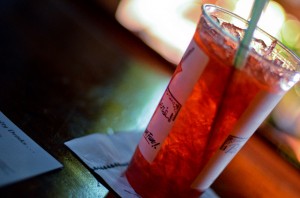How Much Can You Drink Before You’re Drunk?
Posted on by Townsend MyersNew Orleans is a city that has always considered drinking to be a companion to living. Alcohol is paired with everything from meals and music to carpentry (truly — there’s not a right angle in the entire city). Festivals revolve around it, championships are assisted by it and tourists arrive expecting it. We as a city have taken drinking to a higher life affirming level.
Fortunately, most of us know that a celebration of life shouldn’t include drinking and driving. As much as we may love the effects of alcohol on the body, we prefer that death not be one of them. All the effects from alcohol come from a person’s blood alcohol content (BAC), but what is it and what is the process that determines this content?
A recent article in the Wall Street Journal explains BAC and tries to answer the real question we all have in the backs of our minds as we sip that glass of wine: “How much of this can I drink before I need to stop?”
A person’s BAC is the percentage of alcohol in the blood stream and is determined by a formula of time and volume of consumption. How fast you consume determines how effective your body is in metabolizing the alcohol. Like everything you put into your stomach, the alcohol works its way into your bloodstream and heads to the liver to be broken down by enzymes and rendered harmless.
The legal intoxication level in all 50 states is a BAC of .08%. How much can you drink before you reach that limit? A good rule of thumb is that the average healthy liver can handle about one drink per hour (.08% BAC) — anything more than that returns to the bloodstream where it becomes anything but harmless.
A true oddity of alcohol is that it’s metabolized at a constant rate determined by personal characteristics. As long as these personal factors remain the same then you’ll always process alcohol at approximately the same rate. Variables include:
- Weight. You’ll have a lower BAC drinking the same amount as someone who weighs less than you.
- Age. After the age of twenty-five, the liver tends to metabolize quicker
- Gender. Given the same time/volume measure as a man, a woman will have a higher BAC because her body carries less water.
- Curiously, ethnicity — at least for certain peoples of east Asian descent.
- How frequently you drink. For the purposes of survival the liver of a heavy drinker produces a different liver enzyme that processes alcohol quicker
- For other minor variables, check out the article in the Wall Street Journal.
The bottom line is that alcohol affects your reflexes and judgment no matter the amount you consume, making you a danger behind the wheel. Alcohol accounts for a third of all traffic fatalities, which is half of what it was before instituting the use of breathalyzers and the .08% rule in 1980. There are just as many false remedies and precautions associated with beating a Breathalyzer as there are with drinking (swallowing a penny has its own associated dangers). A DUI/DWI will cost you time, money and dignity. So take the easy way: enjoy the city, then call a cab.












